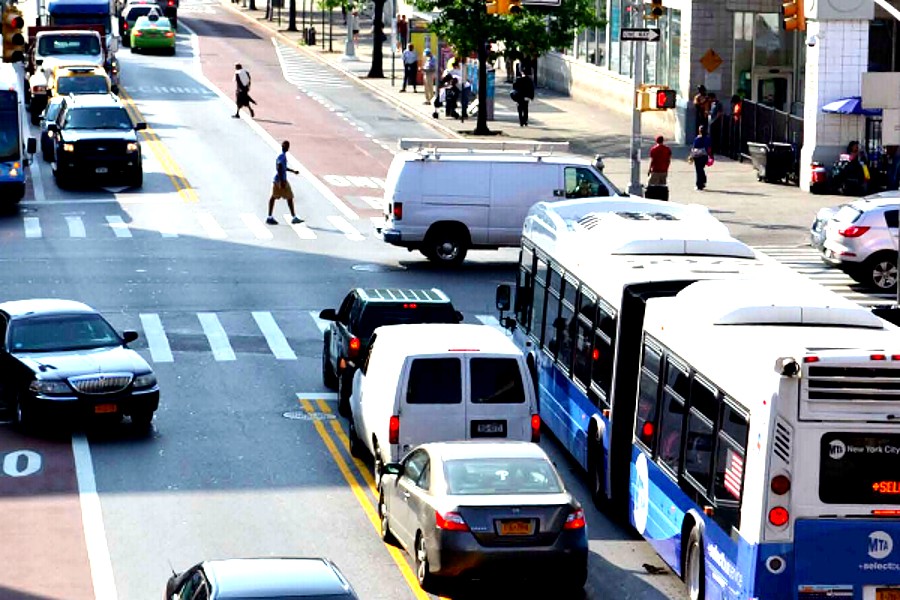
If you think you’re seeing fewer young people around Harlem, you’re probably not wrong.
When people talk about young people, they tend to use it as an umbrella term. Most commonly, though, it refers to people under 18.
If you think there are fewer young people because Harlem might have an overall population decrease, you’d be mistaken. Between 2010 and 2020, Harlem has seen a population increase with an additional 20,000 people.
So why are there fewer young people in Harlem? Let’s take a look at some of the reasons.
Decreasing birth rates
As a whole, the US has been experiencing declining birth rates. While there has been some uptick in 2021, overall birth rates have hit historic lows.
In Harlem, children made up around 18 percent of the population compared to 22 percent of the population in 2010. It’s a sharper decline compared to other parts of the city.
If fewer people have children, it means fewer youths. It’s not necessarily something that can be easily course-corrected, either.
Changing demographics
Harlem’s demographics have changed quite a bit over the years. While it was once a predominately Black and Hispanic neighborhood, Harlem has seen a notable increase in white residents and a decrease in Black and Hispanics. This has caused the racial makeup of the area to shift.
While white people make up the majority race in the United States, they don’t have the most children. Child Trends shows that Hispanics tend to have more children.
Couple the fact there are fewer Hispanics but more whites, who generally don’t have as many children; this is another indicator as to why there are fewer young people.
Aging population
Harlem has seen its population grow older. If there are more older people in a population, then you’re less likely to see young people.
If you take a look at Central Harlem’s and East Harlem’s population aged over 65 from 2010 to 2019, you’ll see some notable increases. For Central Harlem, the population increased from 10.5 percent to 11.9 percent, and in East Harlem, it increased from 12.5 percent to 13.4 percent.
When it comes to having children, people over the age of 65 generally don’t have them. They either can’t produce any more children, nor do they desire to.
Increased cost of living
The cost of living in Harlem has risen over the past years. If people have to spend more on housing, groceries, and other bills, it leaves less money to spend on having children and raising a family.
If we look at the cost of an average 1-bedroom apartment in Central Harlem, we can see the price is nearly $2800, which is around a 32 percent increase from the previous year. That type of cost increase, let alone cost itself, will deter many would-be parents from having children.
Another thing to keep in mind is Harlem tends to be more expensive than some of its surrounding areas. It’s far more likely someone would move from Harlem, if not leave the state, to one of those areas to have and raise a family.
What could the future hold?
It’s never quite easy to predict how the future can turn out and if there will be more or fewer young people in Harlem.
The cost of living may continue to rise in Harlem, meaning people with much higher incomes will likely stay and live there. It isn’t clear whether wealthier people will have more children than poorer people in the future, but history has shown that wealthy people tend to have fewer children.
If the population continues to skew older or more people age 65 and over move to Harlem, then there still won’t be many young people.
However, who can really say for sure? There could be attractive incentives from the federal or local government to have more children. Costs of living might decrease due to technological advances, giving people more money to raise a family. You can never know for certain, but you can speculate.
Become a Harlem Insider!
By submitting this form, you are consenting to receive marketing emails from: Harlem World Magazine, 2521 1/2 west 42nd street, Los Angeles, CA, 90008, https://www.harlemworldmagazine.com. You can revoke your consent to receive emails at any time by using the SafeUnsubscribe® link, found at the bottom of every email. Emails are serviced by Constant Contact








